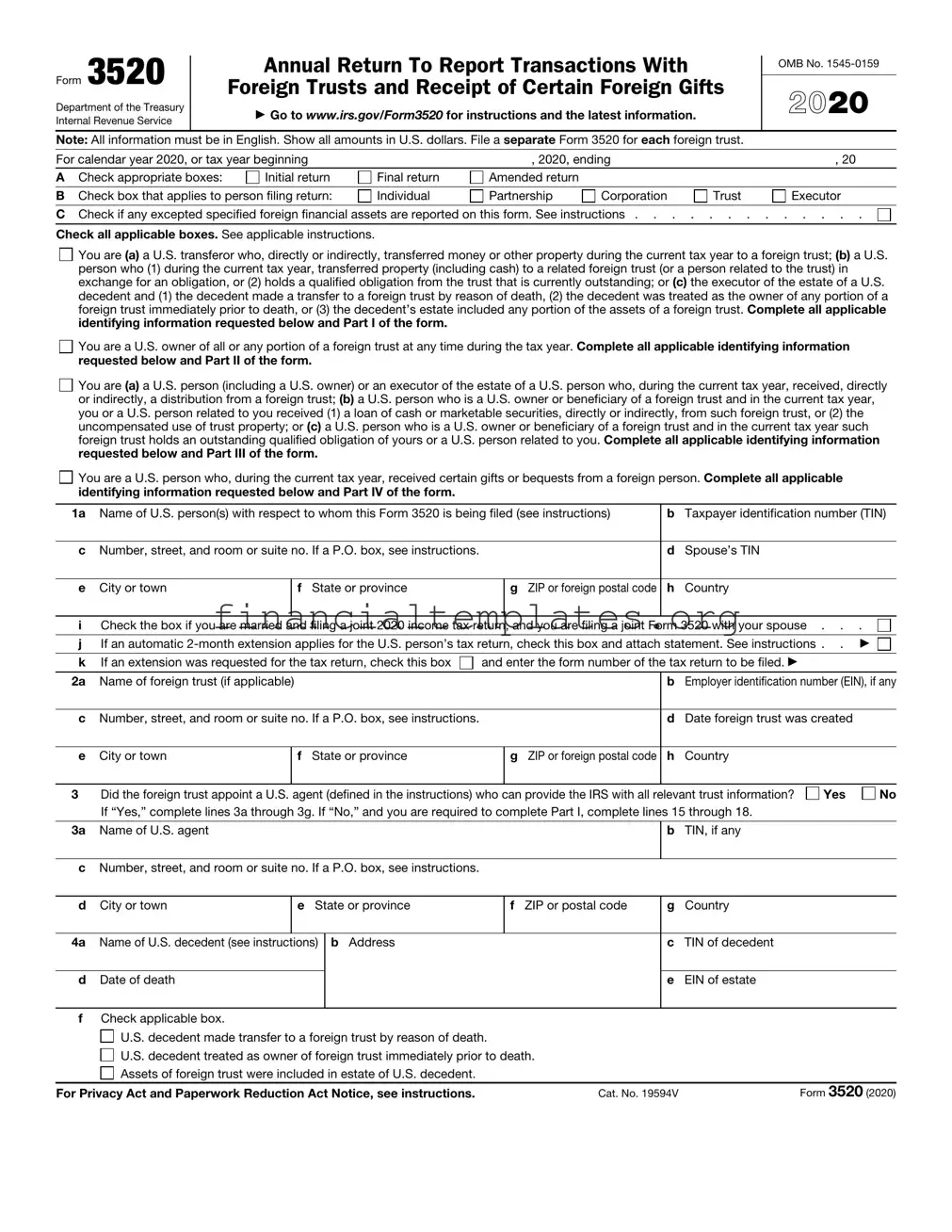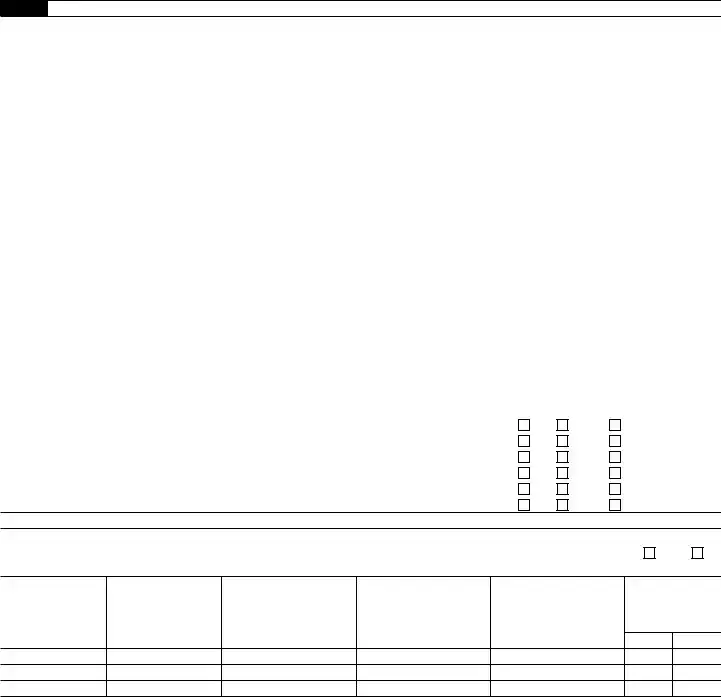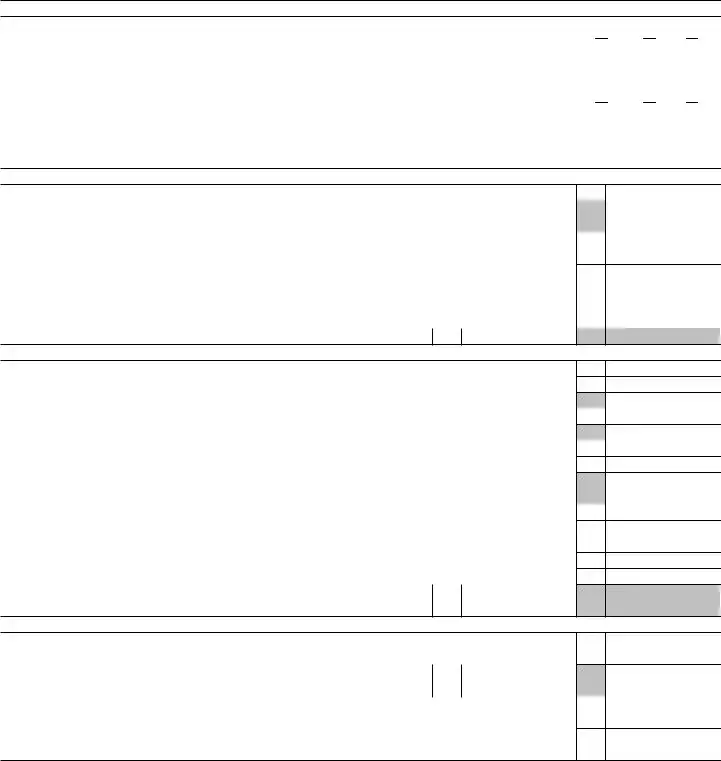The IRS Form 3520, often associated with transactions or trusts involving foreign entities, shares similarities with various other tax documents based on its function to report certain transactions. One comparable document is the FinCEN Form 114, also known as the FBAR (Foreign Bank and Financial Accounts Report). Like Form 3520, the FBAR is used to report foreign financial accounts exceeding a certain threshold, underscoring the IRS's focus on international financial transparency and compliance with U.S. tax laws.
Another document with comparable objectives is the IRS Form 8938, Statement of Specified Foreign Financial Assets. This form requires taxpayers to report their foreign financial assets if they exceed certain thresholds, offering a broader spectrum of reporting that includes not just bank accounts but also foreign stocks and securities. Similar to Form 3520, Form 8938 ensures U.S. persons comply with international tax reporting obligations, although focusing more on personal asset ownership.
The IRS Form 5471, Information Return of U.S. Persons With Respect to Certain Foreign Corporations, also parallels Form 3520 in its aim to monitor and report international financial activities. Required from U.S. citizens or residents who are officers, directors, or shareholders in certain foreign corporations, Form 5471 tracks control and financial involvement, thereby complementing Form 3520's focus on transactions with foreign trusts and receipt of foreign gifts.
Similarly, IRS Form 8865, Return of U.S. Persons With Respect to Certain Foreign Partnerships, requires U.S. persons who participate in foreign partnerships to report transactions and changes in partnership interest. This form aligns with the objective of Form 3520 by enhancing transparency in international financial dealings and ensuring adherence to U.S. tax regulations regarding foreign transactions.
IRS Form 8621, Information Return by a Shareholder of a Passive Foreign Investment Company or Qualified Electing Fund, shares similarities with IRS Form 3520 as it involves reporting on foreign investments. Form 8621 is required from U.S. persons who have investments in passive foreign investment companies (PFICs), aimed at preventing tax deferral on indirect foreign investments, akin to the direct transactions reported on Form 3520.
The Schedule B (Form 1040), Interest and Ordinary Dividends, is another related document, particularly for individuals who must report interest from foreign bank accounts or dividends from foreign corporations. Although it covers a different aspect of financial reporting, its requirement for disclosing foreign accounts and sources of income complements the transparency sought with Form 3520.
The IRS Form 709, United States Gift (and Generation-Skipping Transfer) Tax Return, while domestically focused, parallels Form 3520 in its oversight of gift transactions. Form 709 is concerned with tracking large transfers of wealth through gifts, similar to how Form 3520 is concerned with large gifts from foreign entities. Both forms play a crucial role in preventing tax evasion and ensuring proper tax collection on substantial transfers of wealth.
Lastly, the IRS Form 1040, U.S. Individual Income Tax Return, indirectly relates to Form 3520 through its catch-all nature, requiring taxpayers to report their worldwide income, including income generated from foreign trusts or received as gifts from foreign persons. This overarching requirement reinforces the comprehensive tax reporting regime facilitated by the specific disclosures required under Form 3520, ensuring U.S. persons pay the appropriate taxes on all international transactions.



 You are
You are  You are a U.S. owner of all or any portion of a foreign trust at any time during the tax year.
You are a U.S. owner of all or any portion of a foreign trust at any time during the tax year. 
 You are
You are 
 You are a U.S. person who, during the current tax year, received certain gifts or bequests from a foreign person.
You are a U.S. person who, during the current tax year, received certain gifts or bequests from a foreign person. 

 Yes
Yes  No
No
 Yes
Yes  No
No



 Yes
Yes
 Yes
Yes
 No
No  N/A
N/A
 No
No  N/A
N/A